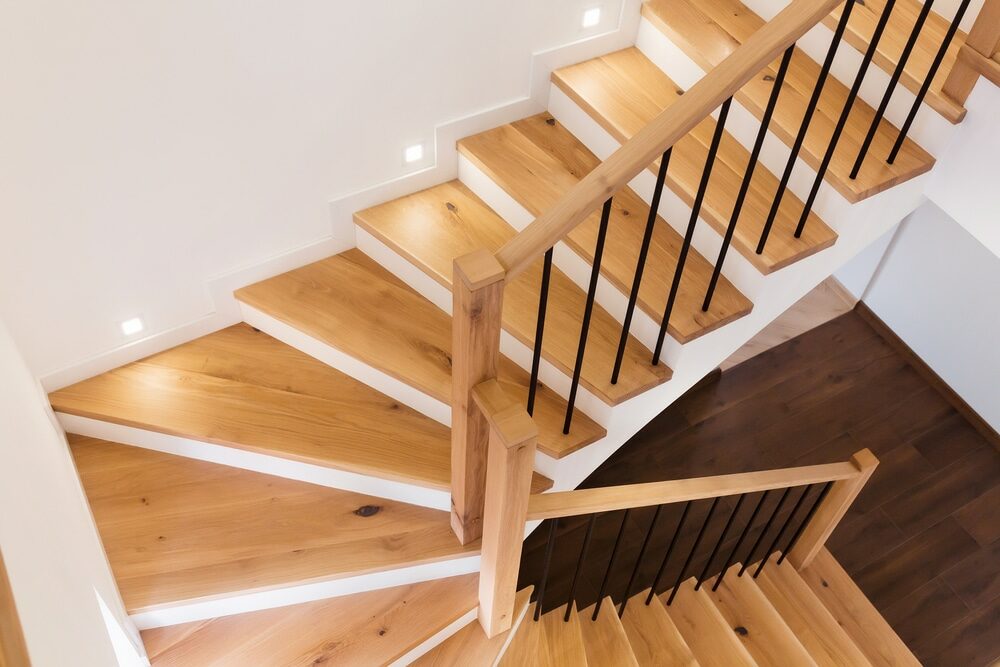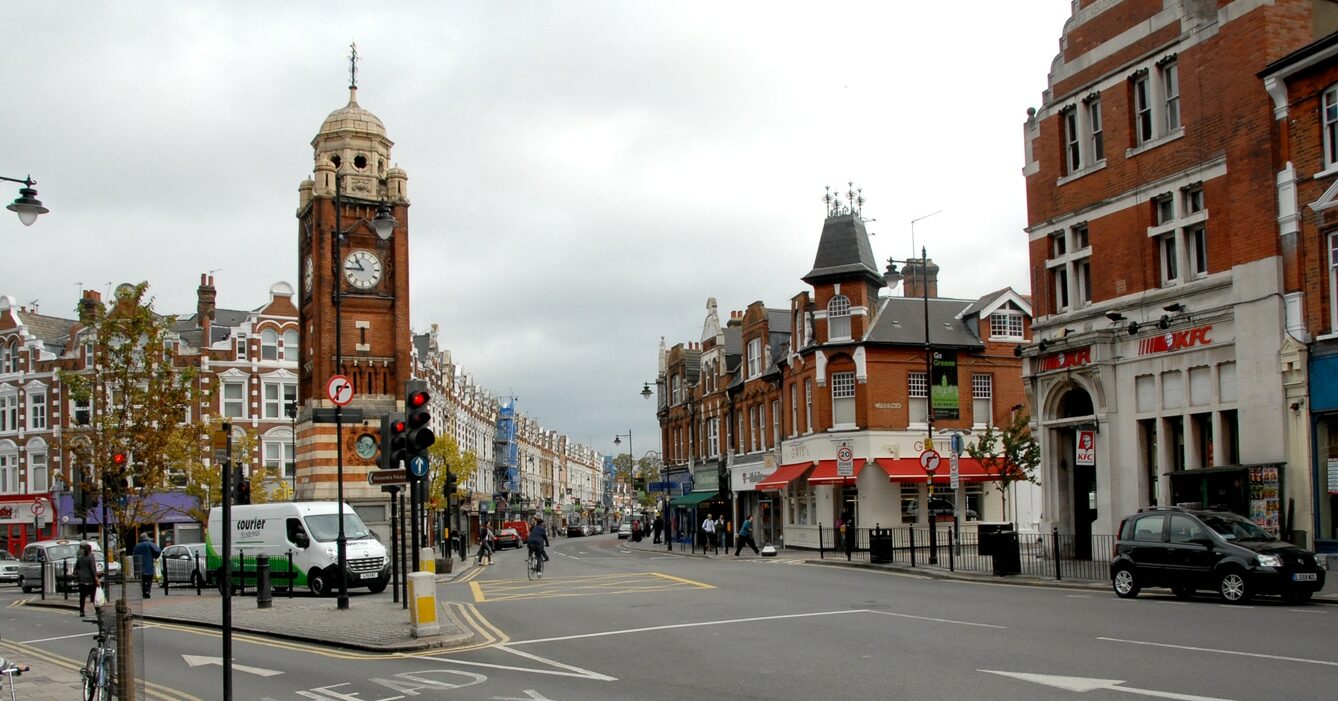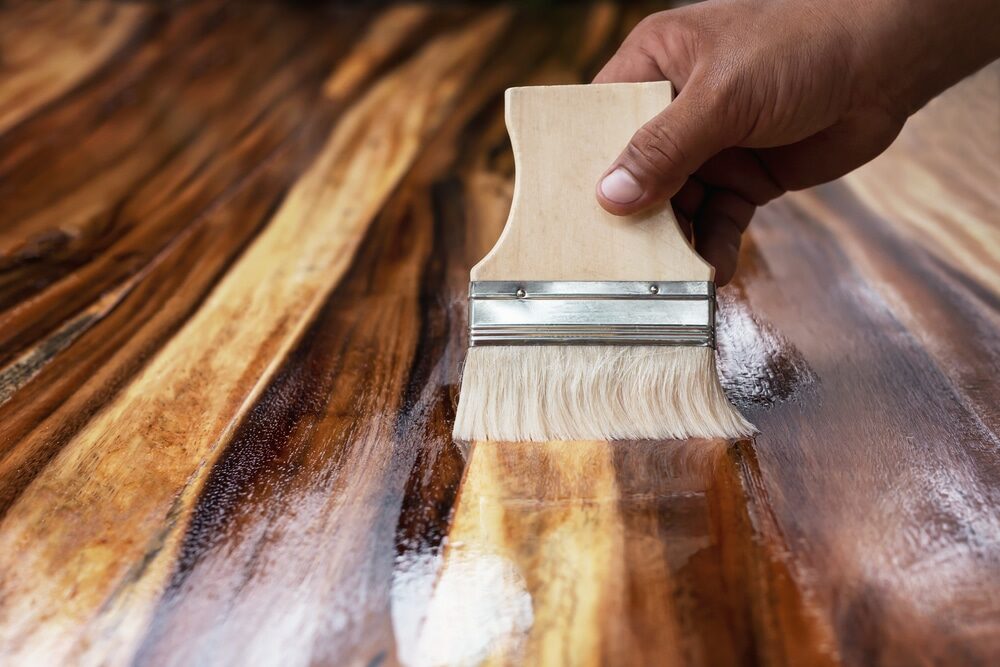London:
Nationwide:
The Role of Buffing in Restoring Old Floors
Posted on October 21, 2023
Buffing
The Role of Buffing in Restoring Old Wood Floors
Restoring old wood floors is a delicate and intricate process that can breathe new life into a space, preserving the character and charm of the original material. Among the various techniques available for refurbishing these surfaces, buffing plays a crucial role. This method not only cleans and smooths the wood but also prepares it for further restoration steps, ensuring a uniform and durable finish. In this article, we delve into the specifics of buffing, outlining its importance in the restoration process and providing insights on how to achieve the best results. Buffing old wood floors is more than just a preparatory step; it’s a restoration technique in its own right. Over time, wood floors endure a plethora of challenges, including scratches, dents, and discoloration, which can detract from their beauty and functionality. Buffing helps to mitigate these issues by removing superficial damage and enhancing the wood’s natural grain. The process involves the use of specialised equipment and abrasive materials to gently sand the floor’s surface, creating a smooth and even canvas for subsequent treatments. Understanding the role of Wood floor buffing in restoring old wood floors is essential for anyone looking to maintain or revive their hardwood surfaces. It requires a combination of skill, knowledge, and the right tools to achieve a flawless finish. This article aims to demystify the buffing process, exploring its benefits, techniques, and best practices. Whether you are a homeowner, a restoration professional, or simply someone with an interest in woodwork, this guide provides valuable insights and practical advice to help you master the art of buffing and restore your old wood floors to their former glory.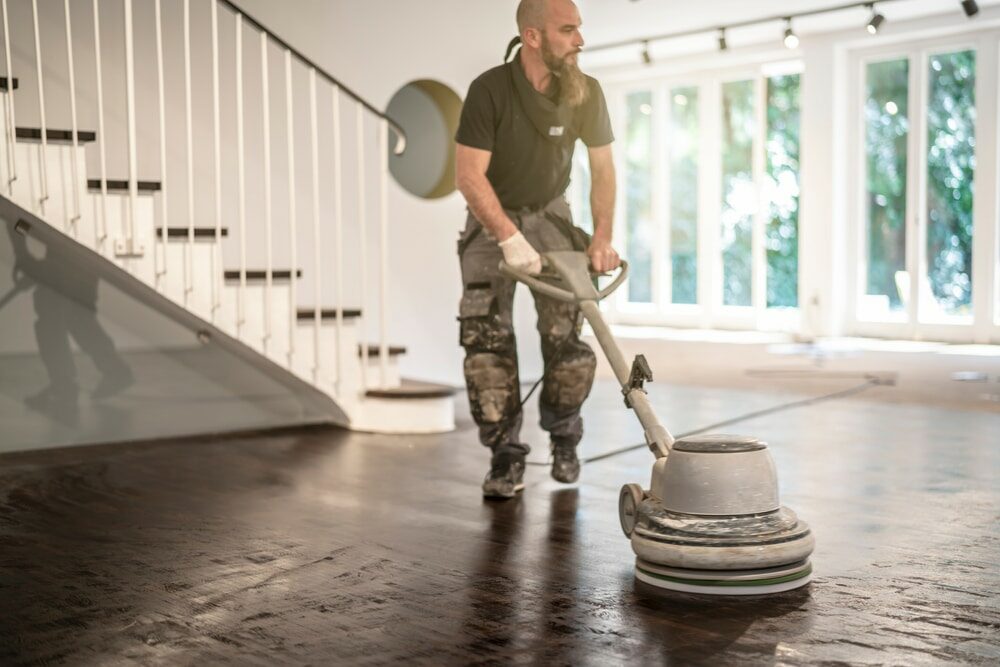
What is wood floor buffing?
Wood floor buffing is a restoration technique used to rejuvenate and maintain hardwood floors. It involves the use of a buffing machine, which is equipped with a pad or brush, to gently abrade the surface of the wood. This process helps to remove scratches, scuffs, and other superficial damage, as well as to clean and smooth the floor, enhancing its overall appearance. The buffing machine rotates a pad or brush at high speeds, creating friction on the floor’s surface. This friction helps to sand away minor imperfections and buildups of old wax, dirt, or grime. The process is less aggressive than full sanding and is often used as an interim solution to maintain the floor’s appearance between more intensive refinishing jobs. After buffing, the floor is typically cleaned to remove any remaining dust or debris, and a new layer of finish or wax may be applied to protect the wood and give it a fresh, polished look.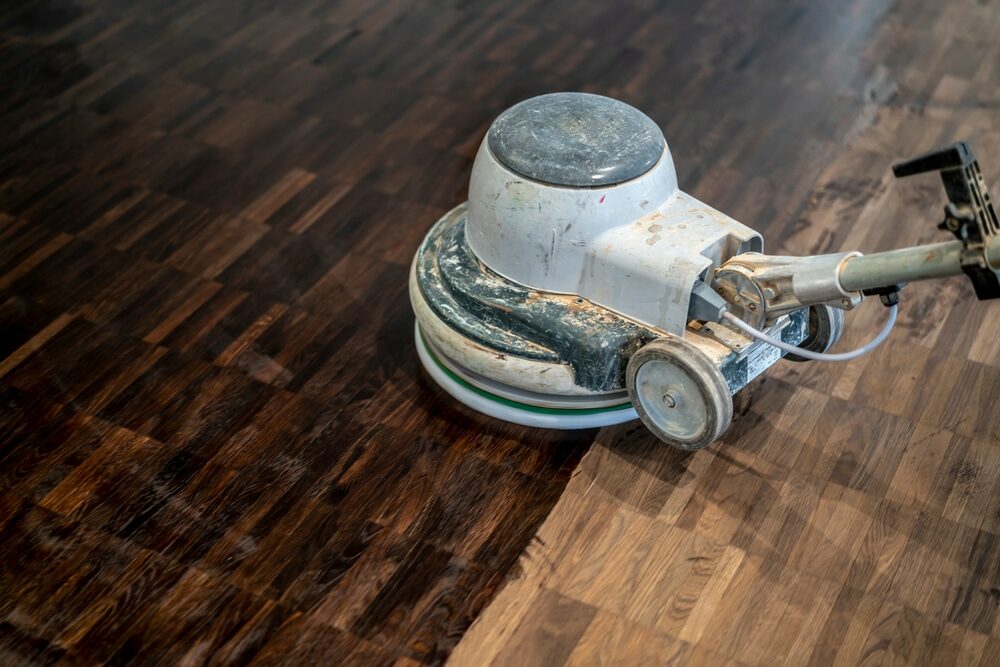
Benefits of Wood Floor Buffing:
Buffing old wood floors is a revitalising process that offers numerous benefits, not just in terms of aesthetics but also for the longevity and functionality of the flooring. Here’s a detailed look at the advantages:1. Restoration of Shine and Lustre:
- Enhanced Aesthetics: Buffing removes the dullness and wear from the surface of the wood, restoring its original shine and luster. This enhances the overall aesthetics of the room, making the space more inviting and appealing.
2. Minor Scratch and Scuff Removal:
- Surface Renewal: The process helps to diminish the appearance of minor scratches, scuffs, and marks resulting from daily wear and tear, providing a smoother, more even surface.
3. Cleaning and dirt removal:
- Improved Cleanliness: Buffing effectively cleans the surface of the wood floor, removing dirt, dust, and grime that can accumulate over time, contributing to a healthier living environment.
4. Preparation for Refinishing:
- Optimal Surface for Finish Application: Buffing creates a smooth and clean surface, which is essential for the optimal application of finishes, waxes, or sealants, ensuring better adhesion and a more uniform appearance.
5. Extended Floor Lifespan:
- Preservation of Wood: By regularly buffing and maintaining the wood floors, you help to preserve the material, potentially extending its lifespan and delaying the need for more invasive and costly restoration methods, such as sanding and refinishing.
6. Cost-Efficiency:
- Economical Maintenance Option: Buffing is a cost-effective alternative to full floor refinishing. It requires less labour, time, and materials, making it an economical choice for maintaining the appearance and integrity of old wood floors.
7. Enhancement of Wood Grain:
- Accentuation of Natural Beauty: The buffing process can enhance the natural grain and pattern of the wood, highlighting its intrinsic beauty and character, which is especially valuable in historic or antique flooring.
8. Improved Surface Protection:
- Increased Resistance to Damage: A buffed floor, when properly finished, is more resistant to spills, stains, and other potential sources of damage, helping to protect the integrity of the wood.
9. Faster and Less Disruptive:
- Convenience: Compared to full floor refinishing, buffing is a quicker process, resulting in less downtime and disruption to the household or business.
10. Sustainable Maintenance Option:
- Preservation of Resources: By maintaining and preserving old wood floors through buffing, there is less need for replacement with new materials, contributing to conservation of resources and sustainability.
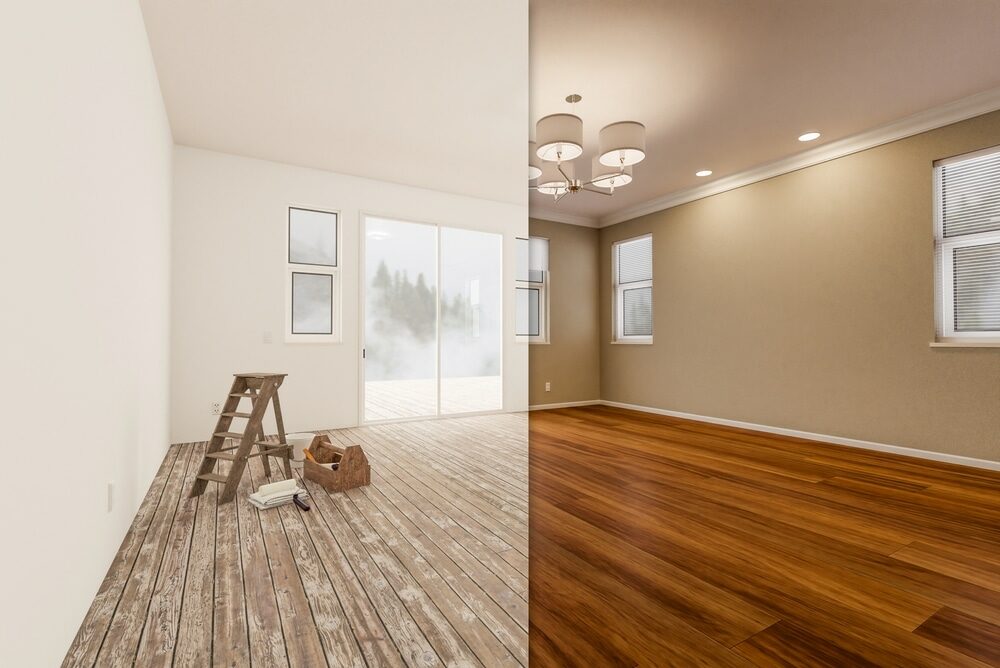
Considerations:
While wood floor buffing offers numerous benefits, it’s important to note that it is not a substitute for full floor refinishing. Deep scratches, extensive wear, and structural damage cannot be addressed with buffing alone. Additionally, floors that have been buffed numerous times may eventually require sanding to remove accumulated layers of wax or finish and to expose fresh wood for refinishing. Wood floor buffing is a valuable technique in the arsenal of hardwood floor maintenance, providing a way to refresh and protect floors with less effort and expense than full refinishing. Whether performed as part of a regular maintenance routine or as a stand-alone service, it plays a crucial role in preserving the beauty and longevity of hardwood floors.Best Practices in Wood Floor Buffing
Achieving the best results in wood floor buffing requires a combination of the right tools, techniques, and attention to detail. Here are some best practices to ensure the process is effective and yields a beautiful, long-lasting finish:1. Assess the floor condition:
- Pre-Buffing Inspection: Before starting, thoroughly inspect the floor for any signs of major damage, such as deep scratches, gouges, or warped boards. Buffing is not suitable for floors with extensive damage and may require more intensive restoration methods.
2. Choose the Right Equipment and Materials:
- Quality Buffing Machine: Ensure you have a high-quality buffing machine with appropriate pads or brushes. The choice of pad or brush and the abrasive should match the wood type and the condition of the floor.
- Proper Cleaning Solutions: Use the right cleaning agents that are specifically designed for wood floors. Avoid harsh chemicals that can damage the wood or leave residues.
3. Clean the floor thoroughly.
- Dust and Debris Removal: Before buffing, clean the floor thoroughly to remove all dust, dirt, and debris. This helps prevent scratches during the buffing process and ensures a smoother finish.
4. Test in an Inconspicuous Area:
- Patch Testing: Always test the buffing process in a small, inconspicuous area of the floor first. This helps ensure the chosen pad, abrasive, and cleaning solutions are suitable and will not cause damage.
5. Buff with the Grain of the Wood:
- Directional Buffing: When using the buffing machine, move it in the direction of the wood grain. This helps maintain the integrity of the wood and ensures a more even finish.
6. Use consistent pressure.
- Even Application: Apply consistent pressure throughout the buffing process. Avoid pressing down too hard, as this can cause uneven wear and potential damage to the floor.
7. Keep the buffing pad clean.
- Regular Pad Maintenance: Regularly check and clean the buffing pad to ensure it is free from debris that could scratch the floor. Replace the pad if it becomes worn out.
8. Follow up with Proper Finishing:
- Sealing and Protecting: After buffing, clean the floor to remove any remaining dust and apply a suitable finish, wax, or sealant. This helps protect the wood and enhances the floor’s appearance.
9. Regular Maintenance:
- Ongoing Care: Incorporate buffing into your regular floor maintenance routine, but avoid over-buffing, as this can wear down the wood over time.
10. Seek professional advice when needed.
- Expert Guidance: If you are unsure about any aspect of the buffing process or if the floor has extensive damage, seek advice or services from a professional flooring specialist.

Maintenance and care post-buffing
Proper maintenance and care after buffing a wood floor are crucial to prolonging the life of the floor and maintaining its aesthetic appeal. Following the right practices ensures the floor remains in top condition, preserving the effort and resources invested in the buffing process.1. Apply a suitable finish or sealant:
- Protection: After buffing, apply a high-quality wood floor finish or sealant to protect the surface from scratches, spills, and UV damage. This creates a barrier that enhances the durability of the floor.
2. Allow adequate drying time.
- Patience is key. Ensure the applied finish or sealant has sufficient time to dry completely before allowing foot traffic or placing furniture back on the floor. This ensures the protective layer sets properly.
3. Use furniture pads:
- Avoid Scratches: Attach felt pads to the bottoms of furniture legs to prevent scratches and dents when moving pieces on the wood floor.
4. Regular Cleaning:
- Gentle Products: Clean the floor regularly using products specifically designed for wood floors. Avoid harsh chemicals and excessive water, as they can damage the wood and finish.
5. Use soft cleaning tools:
- Gentle on Wood: Use a soft-bristled broom or microfiber mop for cleaning. Avoid using abrasive pads or steel wool, as they can scratch the surface.
6. Immediate Spill Cleanup:
- Prevent Stains: Clean up spills immediately to prevent them from seeping into the wood and causing stains or damage.
7. Use rugs in high-traffic areas:
- Additional Protection: Place rugs or mats in high-traffic or spill-prone areas, such as entryways and dining rooms, to protect the floor from wear and spills.
8. Maintain indoor humidity levels:
- Balance is essential. Keep indoor humidity levels within the recommended range for wood floors (typically between 30 and 50%) to prevent warping, cracking, or other moisture-related issues.
9. Avoid Sunlight Damage:
- UV Protection: Use curtains or blinds to protect the floor from prolonged exposure to direct sunlight, which can cause fading or discoloration over time.
10. Regular Inspection:
- Stay Proactive: Periodically inspect the floor for any signs of wear, damage, or other issues. Addressing problems early can prevent more extensive and costly repairs in the future.
11. Schedule professional maintenance:
- Expert Care: Consider having a professional flooring specialist inspect and maintain the floor every few years, especially in high-traffic or commercial settings.
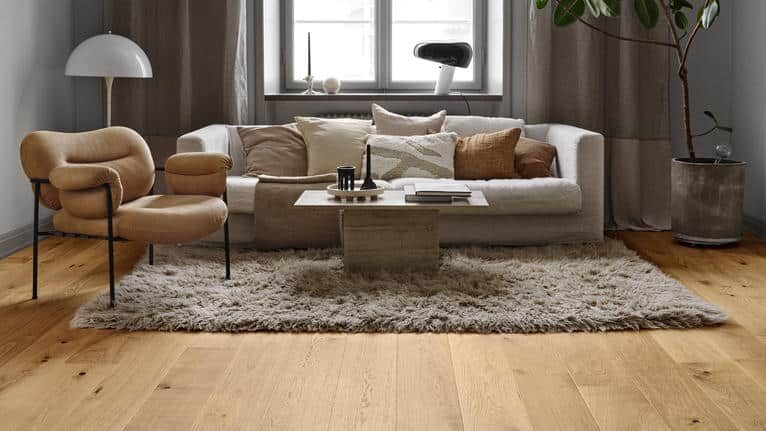
Case Studies: Transformations Through Buffing
Buffing wood floors can lead to incredible transformations, revitalising old, worn-out surfaces into vibrant, renewed spaces. Below are case studies illustrating the transformative power of buffing.Case Study 1: Historical Home Revival
Background: A Victorian-era home with original oak floors was showing signs of wear after decades of use. The floors were dull, scratched, and had lost their original lustre. Objective: To restore the floors’ appearance while preserving the historical integrity of the home. Process:- Assessment: A professional flooring specialist assessed the floors, confirming that buffing was a suitable restoration method.
- Cleaning: The floors were thoroughly cleaned to remove dirt and old wax.
- Buffing: A low-speed buffer with a fine abrasive pad was used to gently abrade the surface, removing superficial scratches and dullness.
- Finishing: After buffing, the floors were vacuumed to remove dust, and a high-quality matte-finish sealant was applied to protect the wood and enhance its natural grain.
Case Study 2: Commercial Space Improvement
Background: A busy coffee shop had hardwood floors that were worn and scratched, detracting from the overall ambiance of the space. Objective: To rejuvenate the floors with minimal downtime for the business. Process:- Assessment: The condition of the floor was evaluated, and buffing was deemed the most practical solution.
- Evening Work: The buffing was scheduled after business hours to avoid disruption.
- Buffing: A high-speed buffer with a medium abrasive pad was used to quickly and effectively smooth out the surface.
- Finishing: The floors were cleaned, and a durable, glossy finish was applied to withstand heavy foot traffic.
Case Study 3: Apartment Rental Refresh
Background: An apartment with old, scratched hardwood floors needed an upgrade before being put on the rental market. Objective: To enhance the appeal of the apartment by revitalising the floors. Process:- Assessment: The floors were evaluated, and it was determined that buffing would be sufficient to improve their appearance.
- Buffing: A buffer with a fine-grit pad was used to gently polish the surface, removing light scratches and scuffs.
- Finishing: A water-based polyurethane finish was applied to provide a durable, quick-drying protective layer.

Conclusion
Buffing old wood floors stands out as an invaluable restoration technique, providing a bridge between regular maintenance and the more drastic measure of complete refinishing. This process not only revives the aesthetic appeal of wood floors but also plays a crucial role in preserving their integrity and extending their lifespan. Through the gentle abrading of the wood’s surface, buffing effaces minor scratches, scuffs, and dullness, bringing back the floor’s original lustre and highlighting the beauty of the wood grain. When combined with the application of appropriate finishes or sealants, the process enhances the floor’s resistance to damage, providing a protective layer that contributes to the floor’s longevity. Beyond its practical benefits, buffing is a cost-effective and time-efficient alternative to full floor restoration. It requires fewer resources, causes less disruption to living or working spaces, and, when done regularly, can significantly delay the need for more intensive restoration methods. However, achieving optimal results from buffing requires adherence to best practices, from the initial assessment of the floor’s condition to the selection of the right equipment, materials, and techniques. Post-buffing maintenance and care are equally crucial, ensuring that the rejuvenated floor remains in top condition. In conclusion, wood floor buffing stands out as a pivotal practice in the realm of floor restoration, offering a balanced approach that combines aesthetic rejuvenation with practical protection. Whether for historic homes, commercial spaces, or rental properties, the transformative power of buffing cannot be overstated, proving its worth as an indispensable tool in the preservation and enhancement of wood floors.Some Useful Links:
- Stairs Sanding & Refinishing
- Floor Sanding Services
- School Floor Sanding
- Wood Floor Restorations
- Wood Floor Repairs
- Wood Floor Polishing
More from our Blog:
DIY Buffing Techniques for Homeowners Buffing vs Polishing: What’s the Difference? Different Buffing Techniques for Hardwood Floors The Role of Buffing in Achieving a Smooth Finish How to Choose the Right Buffer for Floor Sanding How to Repair Damaged Floors with Belt Sanding Step-by-Step Guide to Belt Sanding Your Floors Innovative Techniques for Using Belt Sanders in Floor Refinishing How to Achieve a Perfectly Flat Surface with Belt Sanding for Floor Refinishing
Sanding
We provide virtually dust-free sanding with our continuous belt machinery with mobile extraction units, giving you a safer environment for your family.
Oiling
This organic finish not only adds beauty to your home but also has exceptional water-repellent characteristics, making it easier to clean and maintain.
Waxing
This natural floor finish offers the softest and most mellow appearance – and leaves your floor able to breath.
Buffing
Using soft buffing machines (and hand-polishing where required) will bring a wonderful sheen to your newly-finished floor.
Repairs
We offer a full assessment of your wooden floors to determine what repairs are needed to provide the perfect working surface for the later stages of sanding, staining and sealing.
Restoration
We offer a comprehensive restoration process designed to address floors that are improperly fitted or damaged over time through wear and tear.
Request a fixed price quote for your wood floor restoration now
Simply enter your postcode below to get started.
Services
Wood Floor Sanding Wood Floor Restoration Wood Floor Scratch Repair Squeaky Wood Floor Repair Parquet Floor Sanding Parquet Floor Restoration Commercial Floor Sanding Church Floor Sanding Community Centre Floor Sanding School Floor Sanding Gap Filling Gap Filling with ResinCopyright © Mr Sander®
Privacy & Cookies Terms & Conditions Complaints Procedure Cancellation Rights Sitemap